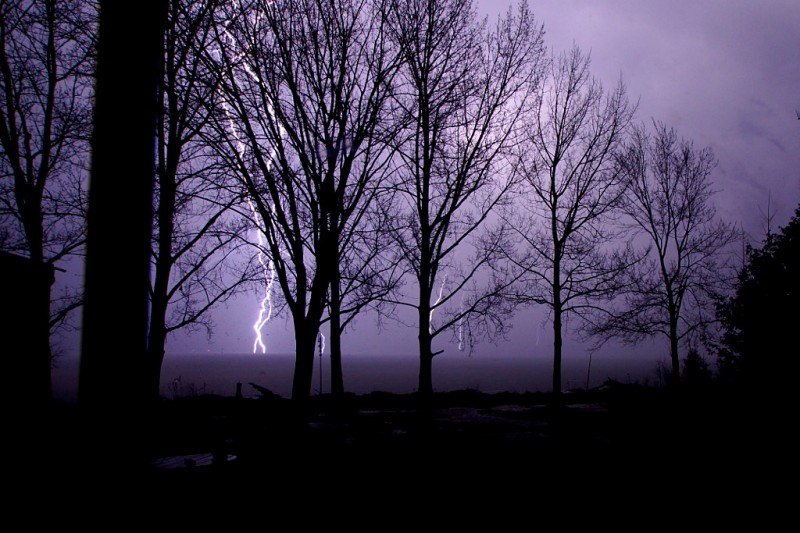
We had a big March Break storm last night in East Dodgeville. I decided to use the opportunity to do something I’ve never been able to do before: take pictures of lightning. I’ve tried in the past but have been wholly unsuccessful for one simple reason: by the time I see that spectacular motivational flash of lightning and then get the camera set up and positioned, the storm has already passed and I’m standing there with a remote in my hand looking like an idiot. But this was a big enough storm that I was still able to have the camera ready for the last two hours of the light show despite missing the first wave of lightning. I’m also a big wimp so I stayed inside and took pictures through the window. I’m sure there would have been many more and better pictures if I’d ventured down to the shore with an umbrella, but some of the strikes were close enough that I was quite happy to be hiding inside. Check below the fold for the obligatory gallery and some comments on the storm and taking pictures of lightning.
- A single bolt of lightning strikes the lake a couple of kilometres away.
- This was the closest, brightest, and loudest hit of the night. It was bright enough to completely blow out the picture and leave an afterimage of three lightning bolts burning on my eyes for a couple of minutes afterward.
- This is essentially the same as the previous picture, but the lightning was far enough away that it didn't overwhelm the sensor.
- There were at least five simultaneous hits on the lake and one on the far shore in this picture, growing fainter and farther away from left to right.
- No individual bolts here, just a 2 a.m. landscape lit up by sheet lightning on all sides.
- This picture is nothing special, but it was the first time that I was ever able to successfully take a picture of lightning instead of standing there waiting like an idiot after the storm had passed.
As I said, this was my first successful attempt at taking pictures of lightning. In all, I took about 140 frames over two and a half hours, about twenty of which resulted in half-decent exposures. I wouldn’t have tried to do it without a sturdy tripod, a bulb setting on the camera, a remote control to trip the shutter without touching the camera, and a wide-angle lens to capture a wide field of view without having to constantly reposition. I spent most of the time experimenting with different camera settings. I eventually found that these settings worked best for me:
- White balance: daylight
- ISO: 200
- Shutter: bulb, with exposures between 10 and 120 seconds, depending on what was happening in the sky.
- Aperture: I tried f/3.5, f/4.5, and f/8. The wider apertures were good for capturing more distant bolts and landscapes lit up by sheet lightning, but once the lightning moved to within a kilometre, f/8 was pretty mandatory to keep it from appearing as a big white blob (see picture #2 in the gallery)
- Lens: I used two lenses at 16mm and 11mm on a camera with a 1.5x crop factor. The actual focal length isn’t important, just go as wide as you can to have the best chance of capturing a lightning strike in the field of view.
Next time, I’m going to try to have two cameras going with different settings, and maybe with one positioned outside but within range of the wireless remote.
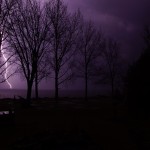
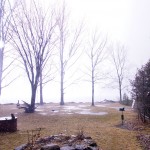
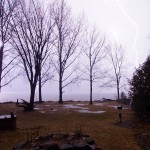
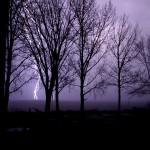
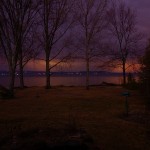
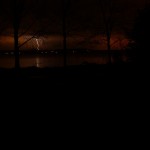
Would you really want to go “down to the shore with an umbrella” when lightning is as close as pic 2?
I like pic 5.
In the often conflicting pursuits of awesome pictures and self-preservation, I have no problem choosing the latter.
Your followers appriciate you staying safe , its hard to continue posting if your crispy bacon.
Hard to get right in the daytime, that’s for sure – great shots nonetheless. Night time is easier. Getting one of those fancy “lightning” timers…well, I have a few dozen other things to spend money on first. But it would be nice to have.